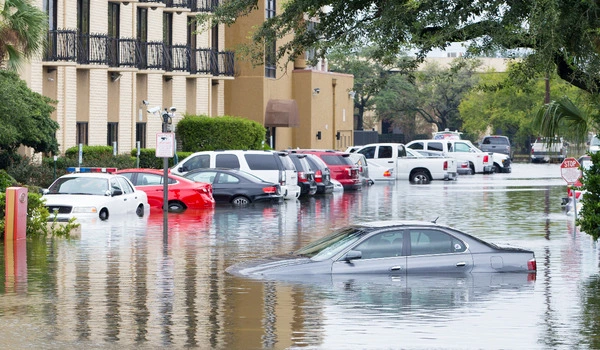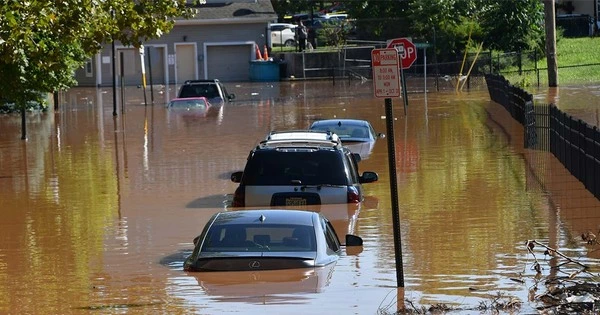It is possible that a new battery technology could prevent electric vehicle fires following hurricanes or other natural disasters. For example, a solid-state battery, which uses a solid electrolyte instead of a liquid one, could be less susceptible to damage from water and flooding. Additionally, other safety measures, such as placing battery cells in sealed, waterproof containers, could also help prevent fires in the event of a natural disaster. However, it is important to note that research into this area is ongoing and it is yet not confirmed if such new battery technology could prevent post-hurricane electric vehicle fires.
A University of Central Florida researcher has developed technology that could prevent electric vehicle fires caused by Hurricane Ian’s saltwater flooding. The aqueous battery technology replaces the volatile and highly flammable organic solvents found in lithium-ion batteries in electric vehicles with salt water to create a battery that is safer, faster charging, just as powerful, and will not short circuit during flooding.
The work is described in detail in a new study published in Nature Communications.
During Hurricane Ian, many electric cars caught fire after being soaked in floodwater. That is because the saltwater corrodes the battery and causes a short circuit, which ignites the flammable solvents and other components.
Yang Yang
“During Hurricane Ian, many electric cars caught fire after being soaked in floodwater,” says Yang Yang, the study’s lead author and associate professor at UCF’s NanoScience Technology Center. “That is because the saltwater corrodes the battery and causes a short circuit, which ignites the flammable solvents and other components.
Also key to the battery’s design is its novel, nano-engineering that allows the battery to overcome limitations of previous aqueous batteries, such as slow charging times and poor stability.
The UCF-designed battery is fast charging, reaching full charge in three minutes, compared to the hours it takes lithium-ion batteries. Yang is an expert in developing materials for renewable energy devices such as batteries with improved safety.

Saltwater Electrical Vehicle Fires
Electric vehicle fires caused by saltwater flooding were reported during Hurricane Sandy in 2012 and Hurricane Isaias in 2020. As a result, the National Highway Traffic Safety Administration and the United States Fire Administration have issued special guidelines for responding to electric vehicle fires caused by saltwater flooding.
The International Association of Fire Chiefs recommends that firefighters secure a continuous and sustainable water supply of 3,000 to 8,000 gallons to put out the fires. According to the US Fire Administration, at least 12 electric vehicle fires were reported in Collier and Lee counties in Florida following Hurricane Ian, where many cars were submerged at least partially in saltwater.
Designing the Battery
Previous aqueous battery designs were plagued by low energy output, instability, the formation of harmful metallic structures known as dendrites on the negative electrode, and corrosion. The UCF researchers were able to create a dual-cation battery that stores more energy by using saltwater as the battery’s liquid electrolyte and naturally occurring metal ions found in saltwater, such as sodium, potassium, calcium, and magnesium. They were able to overcome the sluggishness of previous single-cation aqueous battery designs thanks to this implementation.
To address issues with instability, dendrite growth, and corrosion, the researchers created a forest-like 3D zinc-copper anode with a thin zinc-oxide protective layer on top. The novel, nano-engineered surface, which resembles a birds-eye view of a forest, allows the researchers to precisely control electrochemical reactions, increasing the battery’s stability and charging speed. Furthermore, optical microscopy revealed that the zinc-oxide layer inhibited the dendritic growth of zinc.
“These batteries using the novel materials developed in my lab will remain safe even if used incorrectly or flooded in salt water,” Yang says. “Our work can help improve electric vehicle technology and continue to advance it as a reliable and safe mode of transportation.”
















